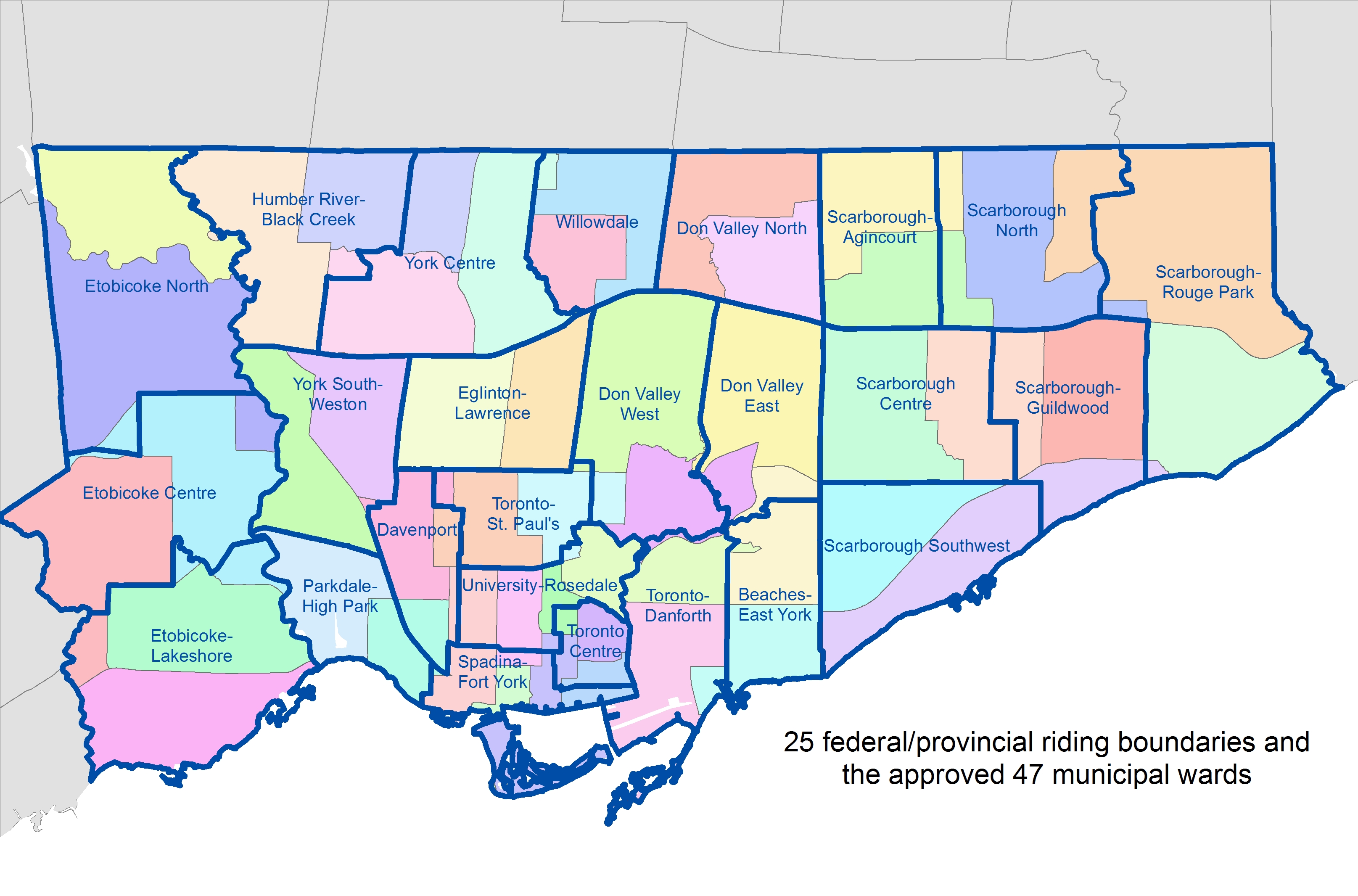Local governments across Ontario, including the City of Toronto, are currently undergoing municipal elections, in which voters will choose local candidates to serve during the next term.
Every four years, Ontario voters go to the polls on the third Monday in October to choose their local representatives, who will defend their interests and values while in office. Every resident who is at least 18 years of age and a Canadian citizen is eligible to cast a ballot.
Municipal governments focus on issues of local importance, including garbage and recycling collection, animal control, land use planning and development, public transit and recreation.
The City of Toronto
In the City of Toronto, the election is progressing much differently than anticipated when the nomination period opened in May. Toronto is a particularity in Ontario since it is not governed in the same way as the province’s other 443 municipalities. The City of Toronto has greater power and jurisdiction over local issues and covers a much larger area than a typical municipality.

47-Ward City Council Map
Over the last three years, Toronto City Council has conducted extensive public consultations and discussions on the size of Council as a body. It currently contains forty-four councillors and one mayor. The finalized ward map, approved by City Council on November 9th, 2016, changed ward boundaries for forty wards and created three new wards. Therefore, the map approved by City Council would have had forty-seven councillors and one mayor.
The changes were then unsuccessfully appealed to the Ontario Municipal Board (OMB), the body that reviews municipal by-laws to ensure that they are in accordance with provincial policy. In the OMB decision, the majority of members agreed that “[…] there are no clear and compelling reasons to interfere with the decision of council.”
The provincial government at the time, led by former Premier Kathleen Wynne, acknowledged that the decision was the prerogative of the City of Toronto and that they would not interfere.

25-Ward City Council Map
Following the defeat of Wynne’s Liberal government on June 9th, 2018, newly elected Premier Doug Ford and his Progressive Conservative government announced that it would bring forward legislation to circumvent Toronto’s new ward changes and institute a new ward map aligning municipal ward boundaries with their federal and provincial counterparts, reducing the number of City Councillors to twenty-five, plus the mayor.
“We ran on a commitment to restore accountability and trust, to reduce the size and cost of government, including an end to the culture of waste and mismanagement,” Ford said. “Because one thing every politician at every level and in every region needs to remember, is that we all share the same boss. We all work for the people.”

Public Outrage Intensifies
Toronto Mayor John Tory, who is running for re-election this fall, took a hardline approach to the Province’s announcement and called a special meeting of City Council to respond. On August 23rd, 2018, City Council agreed to challenge the legality of Bill 5 (Better Local Government Act, 2018) before the courts by a 33-9 vote.
Ontario Superior Court Justice Edward Belobaba ruled that the Bill 5 (Better Local Government Act, 2018) was unconstitutional on the basis that it contravened the freedom of expression rights of candidates and Toronto residents as guaranteed under the Canadian Charter of Rights and Freedoms. Justice Belobaba further directed the City of Toronto to proceed on the 47-ward map that City Council had approved.
Premier Ford responded by appealing Justice Belobaba’s decision to the Ontario Court of Appeal and by pledging to invoke Section 33 (the “notwithstanding clause”) of the Canadian Charter of Rights and Freedoms should the appeal not be successful.
Opposition politicians blasted Premier Ford for using the seldom-used notwithstanding clause, which allows federal and provincial governments to circumvent the Charter rights of Canadians.
Andrea Horwath, Leader of the Official Opposition, questioned Ford’s intentions and concluded that “we have a power-hungry premier (Ford) who obviously doesn’t care about people’s Charter rights”.
The independent Liberal members slammed Ford for focusing on upending Toronto’s municipal election rather than tackling the real issues affecting Ontarians.
Like his opposition colleagues, Green Party Leader Mike Schneider expressed that “we are debating the premier’s personal grudge match against the City of Toronto” and many of its progressive Councillors.
Final Decision for Torontonians
Ultimately, the provincial government’s appeal to the Ontario Court of Appeal was successful with the Justices granting a stay to suspend Justice Belobaba’s ruling while it is appealed later this fall. As a result, the municipal election will proceed under the 25-ward map that was approved by the provincial government, the first big win for Ford since taking office in June.
Student Eligibility to Vote in Ontario’s Municipal Election
Students from Ontario are eligible to vote in the municipal and school board elections this October, provided that they intend to return following the completion of their education. Check your voter registration status online at www.voterlookup.ca or by contacting your local municipal clerk’s office.
Oliver Jacob is a third year Politics and History major and News Editor of The Athenaeum





